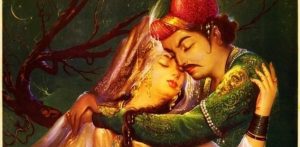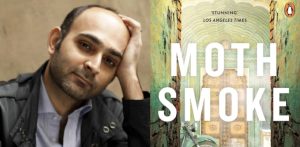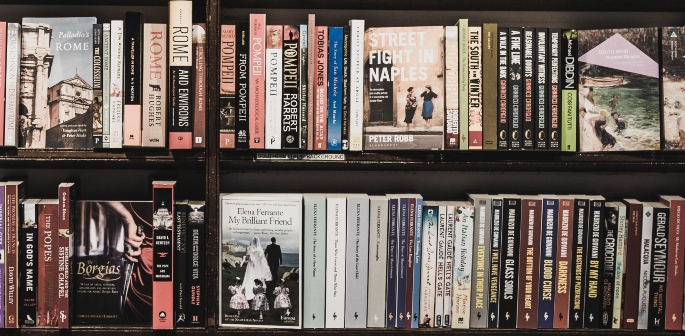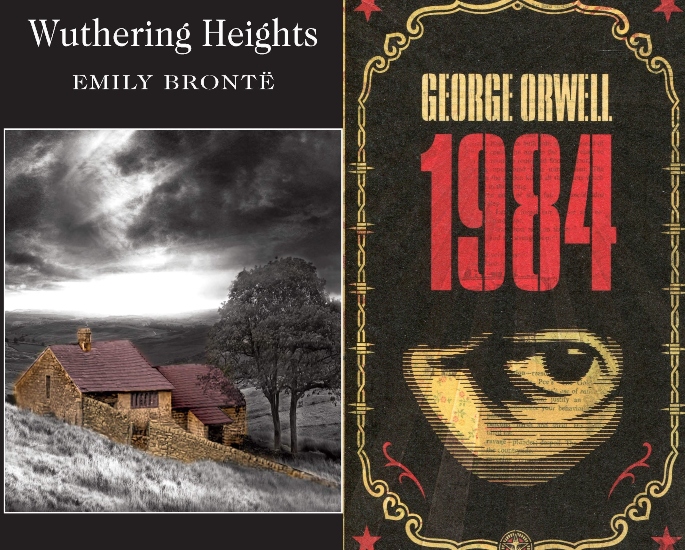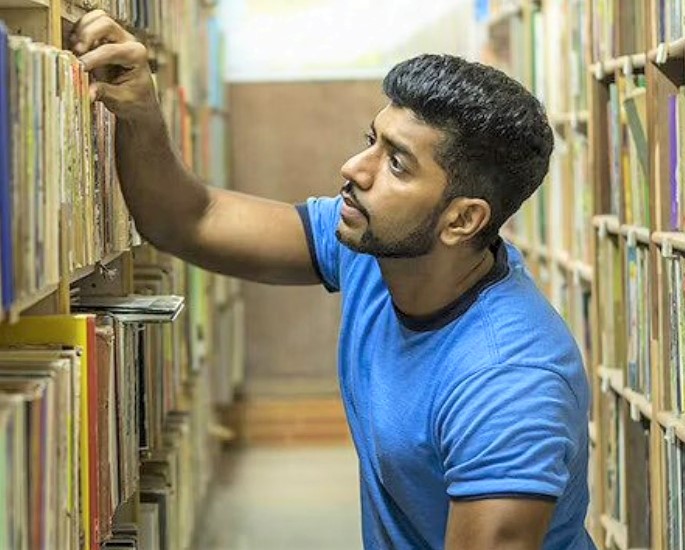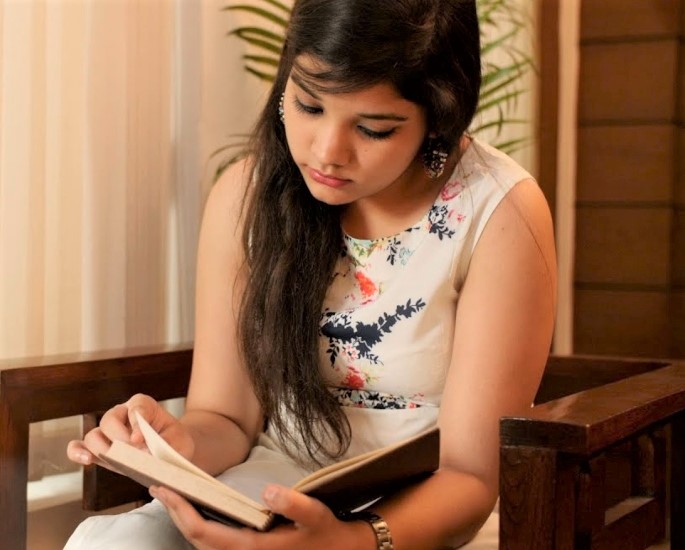"A diverse curriculum will help kids grow emotionally"
For centuries, literature has remained at the forefront of the most important conversations but there is still a lack of South Asian inclusion.
From being taught in schools to a means of escapism during the Covid-19 pandemic, literature is everywhere.
It is also a crucial tool of communication, which shapes the way we can see the world around us. And it’s not going anywhere either.
Naturally, one may think the rise of online mediums is distracting people away from literary works, but this isn’t true.
The software company, Princh, even made some discoveries in this rise in reading:
“Gen Z has increased their reading more than any other generation since coronavirus struck. Millennials read more books than any other generation.
“Physical books still pack a punch, with every generation preferring them over digital ones.”
But it’s vital to think about what we read and its contents.
With most people founding their love for fiction whilst in the education system, thinking about what is taught is important.
That’s where the literary canon comes into play and the inclusivity in it is something that needs to be voiced.
With significant numbers of South Asians growing up in western educative systems, shouldn’t the literature they be taught reflect them as well?
The lack of South Asian inclusion within mainstream literature may not appear to have devastating consequences, but it really can.
DESIblitz unpacks the notion of the western literary canon, its minimal levels of diversity, and the issues with it all.
What is the Literary Canon?
For any English student, the word “canon” has become one of the most debated.
Essentially, the literary canon is a group of well-esteemed works, which allegedly are the worthiest examples of literature.
Warwick University’s student newspaper, The Boar, dissects its etymology and meaning even further:
“Derived from the Greek word kanôn meaning measuring rod or standard, the canon has been compiled by literary critics, scholars and teachers in order to assert which works of literature are ‘essential’.”
The literary canon is for those novels which you’ve undoubtedly heard of. It is for those authors whose names are drilled into literary history.
Shakespeare, Chaucer, Austen – authors whose works are commonly taught in curriculums and degree levels usually get this elite status.
The New York Times further detailed how a book or piece of literature becomes so carefully integrated into this system:
“Over time a single book becomes a library; the library becomes a school of thought; the school of thought becomes a prism through which the world is supposed to see itself.
“That enthusiasm hardened, through curriculums, book clubs and great-works lists, into something more authoritarian.”
However, the literary canon is also highly debatable. There isn’t really an exhaustive list of books that make the cut, but ones that prevail more than others.
Looking at a platform like Goodreads, their literary canon book lists involves some of the most well-known works.
George Orwell’s novel 1984 (1949), Harper Lee’s To Kill A Mockingbird (1960) and Emily Brontë’s Wuthering Heights (1847) all make the cut.
However, what’s become most concerning is the lack of diversity in the traditional canon.
The western canon, composed of all these authors, may have some very timeless messages.
But despite the universality, how much longer can we admire an art form that simply retreats from South Asian inclusion?
The Problem with The Canon
If you think back to your time in school, college or university, when have you studied a piece of literature written by an ethnic minority?
When did you study something written by someone of South Asian descent?
How many times have you seen South Asian inclusion in the curriculum?
If you’ve been educated in the UK, for example, your responses to the questions above may be minimal.
Often, any South Asian literature is taught in stints or not at all.
Publishing giant Penguin reflected on this lack of inclusion in schools with the harrowing fact:
“Fewer than 1% of students at GCSE study a book by a writer of colour.”
The truth is that South Asians, engaging in western education, are being denied the chance to see themselves in literature.
We can all seek out South Asian literature.
But because the canon chooses to unacknowledge South Asian literature, those stories can’t be disseminated to the public as easily.
The problem with this lack of diversity is that the experiences of humans aren’t being properly explored.
Children, students, adults are dismissed from the opportunity to learn about other cultures and heritages.
Writer Bernadine Evaristo builds on the importance of literary inclusion by headlining:
“A diverse curriculum will help kids grow emotionally and intellectually.”
The author has also become a very prominent advocate of diversifying the industry:
“Literature is a curator of our imaginations, and schools are the caretakers of our young people’s education.
“They are currently being denied access to the glorious, outstanding and often ground-breaking narratives coming out of Britain’s Black and Asian communities.
“Literature is perfect for expanding the understanding of other cultures; for enabling readers to step into the shoes of people who are different to them.”
It is this cultural narrative that writers of South Asian heritage bring to the literary art form.
If the landscape was more truly inclusive, more readers would be exposed to various complexities and ideals that they’re not familiar with.
This in turn engages more readers, builds intimacy with them and the world and promotes self-questioning.
But while the lack of South Asian inclusion in the canon avoids people from learning about experiences, it can also damage South Asians.
What Happens When You Lack Inclusivity?
The lack of media representation for people of colour is becoming a more recognised topic.
The media, as harmful as it is, has so much influence on generations today. It has the ability to empower, motivate and inspire.
But if the South Asian population gets consistently excluded from literary canons, will this hinder future inspiration?
How will the next generation of South Asian writers find the enthusiasm to pursue writing?
Representation is such an important thing that in some cases, gets glossed over.
Representation can teach those about the cultures of their peers. However, it is also an incredibly versatile tool in empowering minorities themselves.
Seeing a story that resembles your own, ultimately, makes it feel like you have someone or someplace to relate to.
Those of South Asian heritage have more freedom when they get older to research different authors.
However, it is the lack of effort from the education system to be more inclusive which can be detrimental to avid young ethnic readers.
The publishing company, Penguin, highlighted how this lack of curriculum diversity is damaging to a country that teaches so many minorities.
For example, with 34.4% of Black, Asian or other ethnic minorities pupils, why do only 0.1% study a book by a woman of colour at GCSE?
Whether it’s within the UK or globally, South Asian identities are vital for the expansion of literature as a whole.
For Desi’s, appreciating a novel’s storyline is one thing.
But, when most of the books you’re observing don’t encompass the intricacies of your own culture, it is disheartening.
In a day and age where the media has such a grip on society, shouldn’t its inclusion of ethnic minorities be essential?
The literary canon, as much as it gets questioned for its futility, is influential.
Whilst it may be dubbed as unfit for modern standards, it still has a hold on the educative system.
Therefore, instead of completely abolishing its existence, one should strive to get the voice of other cultures heard within it.
Penguin’s Lit in Colour campaign is aiming to do this and pledges:
“To give schools the support and tools they need to introduce more books by people of colour into the classroom, for all ages.”
They’ve partnered with authors like Sathnam Sanghera in this journey. The journalist turned author highlighted this project in a tweet, saying:
“#litincolour aims to introduce students everywhere to writing by writers of colour.
“I was in my final year of university before I read my first brown author, and in my 40s before I started thinking about empire. All too common failure in British education.”
Providing an environment that the next generation can see themselves in is pivotal.
The only thing that could be between them and achieving their dreams could be one character, which finally reflects their story.
With more campaigns like Lit in Colour growing, South Asian inclusion within the literary canon should also progress.

